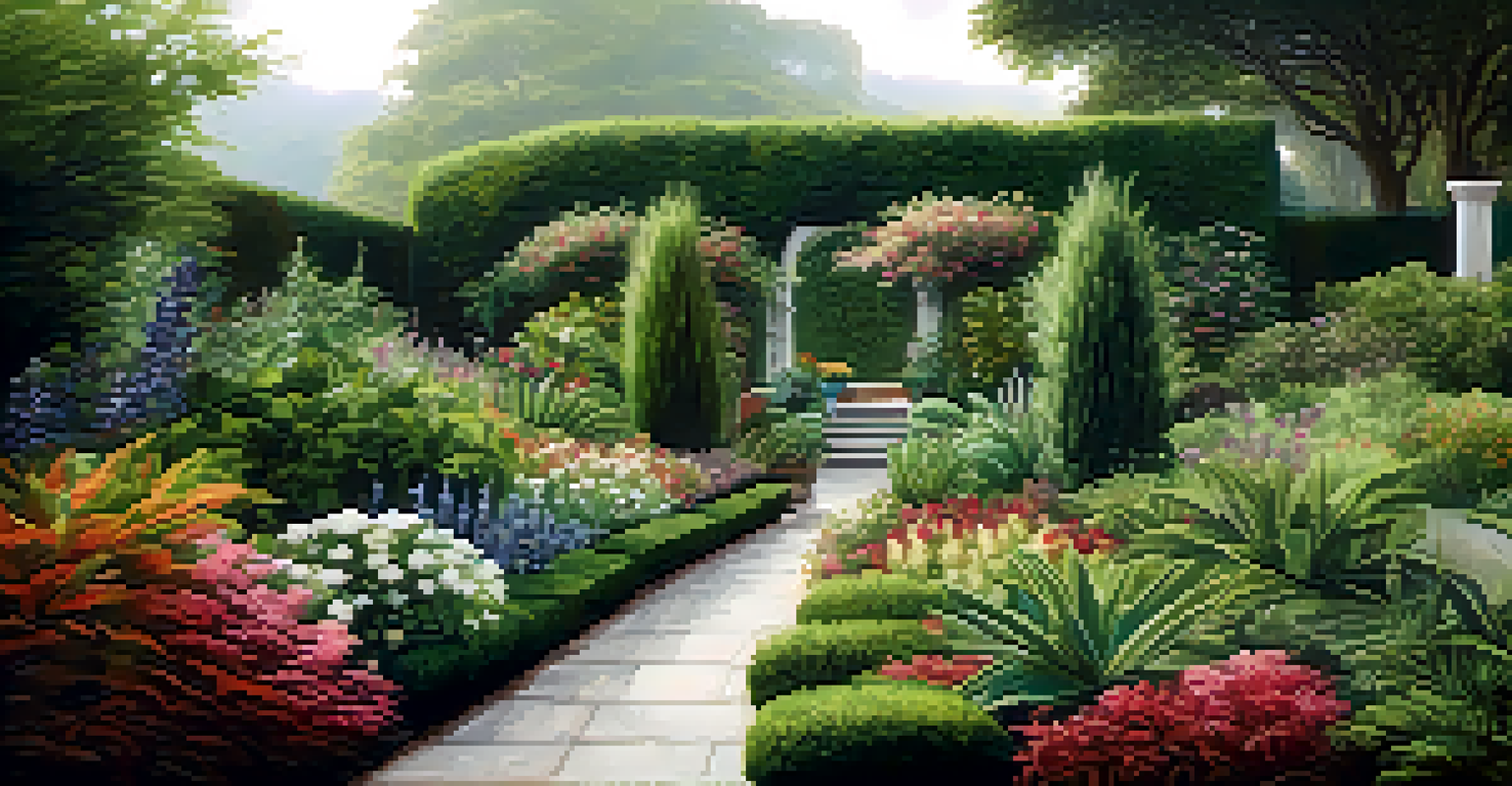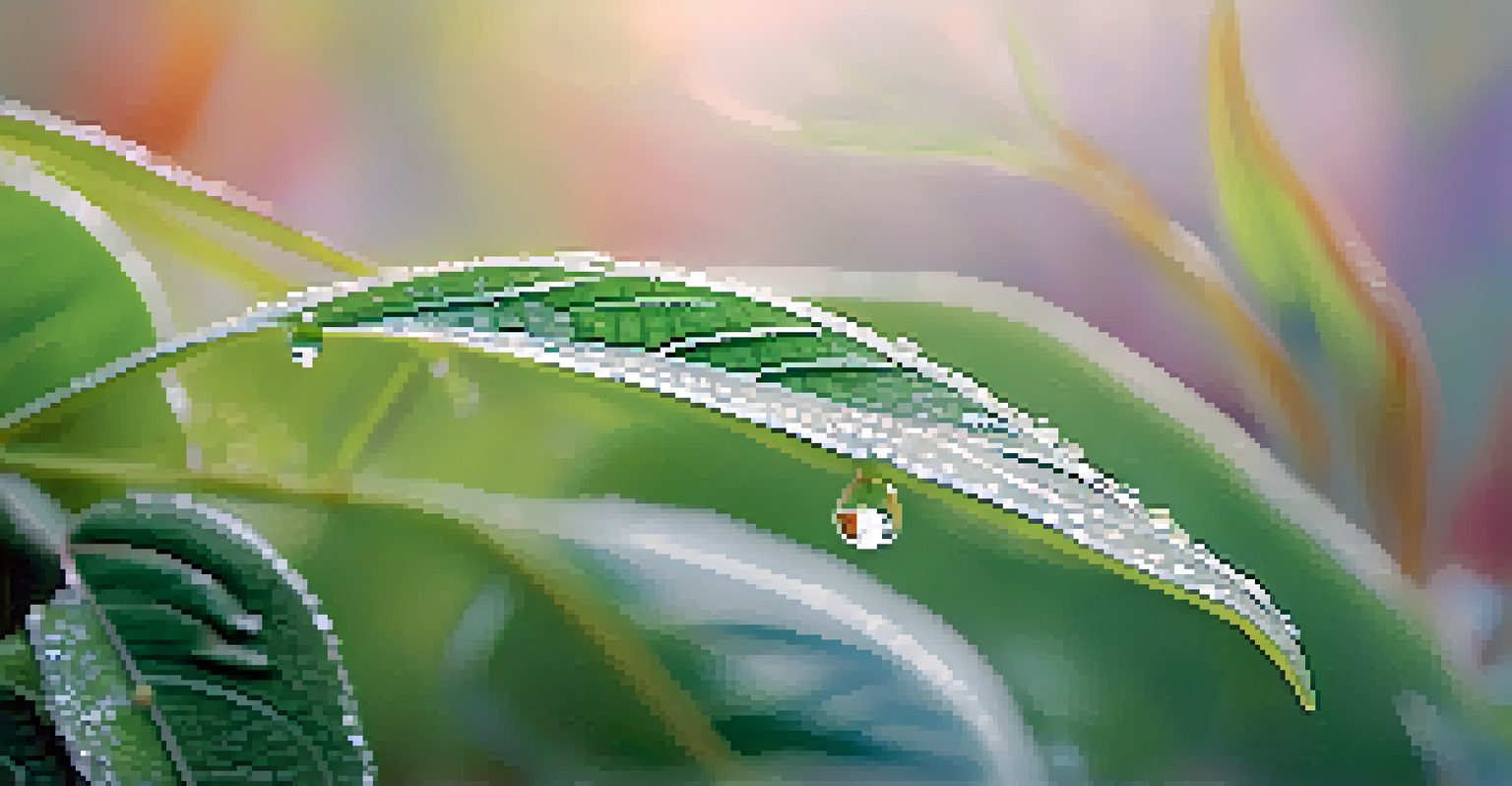Using Depth of Field to Highlight Plant Features Effectively

Understanding Depth of Field in Photography
Depth of field (DoF) refers to the range of distance that appears sharp in an image. It’s a crucial concept in photography that can dramatically influence the way we perceive a subject. When working with plants, mastering DoF helps you focus attention on specific features while beautifully blurring the background.
Photography is the story I fail to put into words.
A shallow depth of field showcases a single bloom or leaf, allowing it to stand out against a softly rendered background. This technique is particularly effective in garden photography, where the intricate details of a flower can be highlighted. On the other hand, a deeper depth of field captures more elements in focus, creating a lush, immersive scene.
In essence, understanding and utilizing DoF can transform mundane plant photography into captivating visual storytelling. The choice between shallow and deep DoF will depend on the message you wish to convey and the specific features of the plant you want to highlight.
Choosing the Right Aperture for Plant Photography
Aperture is the opening in a lens that controls how much light enters, and it plays a key role in determining depth of field. Lower f-stop numbers, such as f/1.8 or f/2.8, result in a shallow depth, making your subject pop against a blurred background. This is perfect for isolating a flower or a unique leaf pattern, drawing the viewer’s eye directly to the feature you want to highlight.

Conversely, higher f-stop numbers like f/8 or f/16 increase the depth of field, making more of the scene appear sharp. This is ideal for capturing a broader view of a garden or a collection of plants, where you want to convey a sense of abundance and detail throughout the frame. Knowing when to switch between these settings can elevate your photography.
Mastering Depth of Field
Understanding depth of field allows photographers to emphasize specific plant features while creating beautiful backgrounds.
Experimenting with different apertures can help you find the perfect balance for your plant photography. By adjusting the aperture, you're not just manipulating light; you’re also crafting the emotional tone of your image.
Lighting: An Essential Element for Depth of Field
Lighting plays a pivotal role in photography, particularly when it comes to depth of field. Natural light, especially during golden hour, can enhance the textures and colors of plants, making them more appealing. When paired with a shallow depth of field, the soft light can create a dreamy effect, perfect for highlighting delicate petals or intricate leaf veins.
A good photograph is knowing where to stand.
On cloudy days or in shaded areas, the diffused light can reduce harsh shadows and bring out the subtle details in your subject. This can be beneficial when you want to capture a more detailed view of a plant while using a wider depth of field. Understanding how different lighting conditions affect depth of field will help you make informed decisions while shooting.
To maximize your results, consider the time of day and weather conditions when photographing plants. The right lighting can transform your images, bringing out the best in both the plant features and the depth of field you choose.
Using Backgrounds to Enhance Plant Features
The background of your image can significantly affect how the plant features are perceived, especially when using depth of field. A cluttered background can distract from the main subject, while a simple, blurred backdrop can bring the plant into focus. When selecting your shooting location, look for backgrounds that complement the colors and shapes of your subject.
For example, a vibrant flower can stand out beautifully against a soft, muted background, creating a striking contrast. On the other hand, if you’re photographing foliage, a background with similar tones can create a harmonious effect. The key is to ensure that the background enhances rather than competes with your plant features.
The Importance of Aperture
Choosing the right aperture is essential for controlling depth of field and achieving the desired focus in plant photography.
Experimenting with different backgrounds and depth of field settings will help you discover unique compositions. An effective background can elevate your photography, making the plant features shine even brighter.
The Role of Composition in Plant Photography
Composition is the art of arranging elements within the frame, and it plays a crucial role in how depth of field impacts your plant photography. Techniques like the rule of thirds can help you position your subject in a way that naturally draws the viewer's eye. By combining effective composition with depth of field, you can create images that are visually engaging and full of depth.
For instance, placing a flower off-center with a shallow depth of field can create a sense of movement and intrigue. Alternatively, a centered composition with a deeper depth of field may evoke a more formal, structured feel. Understanding how composition works with depth of field can help convey the mood you wish to express in your images.
As you refine your skills, remember that effective composition, combined with the right depth of field settings, can transform ordinary plant photographs into extraordinary works of art.
Post-Processing: Enhancing Your Depth of Field
Post-processing is an essential step in photography where you can enhance the depth of field effects in your images. Tools like Adobe Lightroom or Photoshop allow you to fine-tune the sharpness and blur in different areas of the photo. This can be particularly useful if you want to selectively emphasize certain plant features while softening the background even further.
For example, you can use tools to increase sharpness around a flower while applying a gentle blur to the background. This not only highlights the subject but also creates a pleasing visual flow throughout the image. Remember, though, that subtlety is key; overdoing post-processing can lead to unnatural results.
Lighting Enhances Visual Appeal
Natural lighting, especially during golden hour, significantly enhances plant textures and colors, elevating the overall composition.
By mastering post-processing techniques, you can elevate your plant photography, making the most of depth of field to achieve the desired artistic effect.
Tips for Capturing Stunning Plant Features
To wrap up, here are some practical tips for using depth of field to highlight plant features effectively. First, always pay attention to your aperture settings; a wide aperture often works wonders for isolating subjects. Secondly, don’t underestimate the power of lighting; shoot during the golden hour for the best results.
Additionally, take your time to explore different compositions and backgrounds. Sometimes, changing your angle or perspective can reveal stunning features that you may have overlooked. Finally, practice makes perfect; the more you experiment with depth of field, the more intuitive your choices will become.

By implementing these tips, you can elevate your plant photography and capture images that not only highlight features but also tell a story. Remember, every plant has its unique charm; it’s all about showcasing it beautifully.